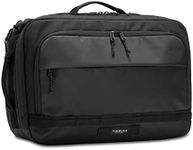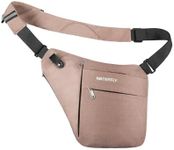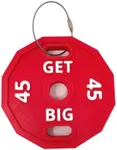Buying Guide for the Best Tech Backpacks
Choosing the right tech backpack is essential for anyone who needs to carry their gadgets and accessories safely and comfortably. A good tech backpack not only protects your devices but also offers convenience and style. When selecting a tech backpack, consider the following key specifications to ensure you find the best fit for your needs.Laptop Compartment SizeThe laptop compartment size indicates the maximum size of the laptop that the backpack can accommodate. This is important because you want to ensure your laptop fits securely and is well-protected. Laptop compartments typically range from 13 inches to 17 inches. Measure your laptop diagonally to determine its size and choose a backpack with a compartment that matches or slightly exceeds this measurement.
Material and DurabilityThe material and durability of a tech backpack determine how well it can withstand daily wear and tear. Common materials include nylon, polyester, and leather. Nylon and polyester are lightweight and water-resistant, making them ideal for everyday use. Leather offers a more premium look but may require more maintenance. Consider your usage patterns and environment to choose a material that balances durability and style.
Storage and OrganizationStorage and organization features refer to the number and type of compartments and pockets available in the backpack. This is crucial for keeping your gadgets, accessories, and personal items organized. Look for backpacks with multiple compartments, including dedicated pockets for tablets, chargers, cables, and other essentials. If you carry a lot of small items, opt for a backpack with more organizational pockets to keep everything in place.
Comfort and ErgonomicsComfort and ergonomics are about how the backpack feels when you wear it. This includes padded shoulder straps, back padding, and weight distribution. A comfortable backpack reduces strain on your shoulders and back, especially if you carry it for long periods. Look for adjustable, padded straps and a breathable back panel. If you have a heavier load, consider a backpack with a chest or waist strap for better weight distribution.
Security FeaturesSecurity features help protect your belongings from theft. These can include lockable zippers, hidden pockets, and RFID-blocking compartments. If you travel frequently or use public transportation, these features can provide peace of mind. Choose a backpack with security features that match your level of concern and the environments you frequent.
Water ResistanceWater resistance ensures that your gadgets and other items stay dry in wet conditions. This is particularly important if you live in a rainy area or travel often. Backpacks can be water-resistant or waterproof. Water-resistant backpacks can handle light rain, while waterproof backpacks offer better protection in heavy rain. Consider your typical weather conditions and choose accordingly.
Style and AestheticsStyle and aesthetics refer to the overall look and design of the backpack. While functionality is key, you also want a backpack that matches your personal style. Tech backpacks come in various designs, from sleek and professional to casual and sporty. Think about where you'll be using the backpack most often and choose a style that fits those settings.





















